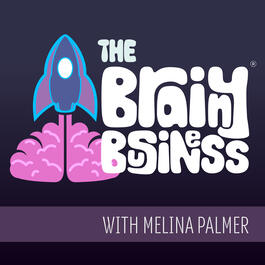
How Minds Change with David McRaney
Today I am very excited to introduce you to David McRaney, you may have heard of his first book You Are Not So Smart which is an international bestseller that is now available in 17 languages. He went on to create an awesome podcast of the same name and wrote a second book You Are Now Less Dumb. I highly recommend both of those and his podcast…and today we are talking about his new book, which just came out this week, called How Minds Change. As you will hear us talk about in the interview, this book is a fascinating journey we take along with David as he seeks to answer the question, "How do minds change?" The book is filled with interesting stories, lots of science, and fun anecdotes. I really enjoyed it and learned so much along the way, some of which you can hear about in today's episode. Join us to hear all about it! Show Notes: [00:43] Today I am very excited to introduce you to David McRaney. You may have heard of his first book You Are Not So Smart which is an international bestseller that is now available in 17 languages. He has a phenomenal podcast of the same name. [03:35] David shares about himself, his background, and how he found himself in this space. [05:30] When his second book came out, he started a podcast. His podcast has been the centerpiece of his world for the last twelve years. [07:55] David found something that he was interested in and wanted to find the answer to and he started to dig. [09:01] Don't jump into anything because you are trying to get rich quickly or because it is the hot new thing. [10:27] Don't follow the trends. Take the content you are skilled at and marry it to the thing you are obsessed with. Then plug away at it. [13:39] Everything that you do builds a skill set that you can laterally apply to other stuff later. [15:56] He writes his books by taking the reader along with him on the journey so they are able to learn with him. [16:40] David shares about the cookie segment that he had on his podcast for 100 episodes. He and Melina bond over baking and business. [19:41] He started the cookie segment because of several cookie studies he read and he knew there was a way to put it into his show. [22:26] He has gotten access to many different people in interviews for the book, podcast, and other work – how can you do the same? [24:27] You can email anyone and at least they will tell you no, but 75% of the time people say yes. [25:34] He explains in his emails that he is reaching out because he needs them and it would be a better show/book/project if they are part of it. [27:33] When people realize that you genuinely care and are interested they are more likely to say yes. [28:13] One of the biggest parts of How Minds Change is the exploration of "The Dress" and the neuroscience behind it. [30:37] Reaching out to his connections often led to other connections and allowed him to create even more connections. [33:14] He shares about "The Dress." The dress is an image that appeared on the internet where people could not agree on what they saw. [35:23] With the dress, truly you saw it either one color (black and blue) or the other (white and gold) and you couldn't see it any other way. [37:32] When we see something that is overexposed we have no choice, the brain lowers the overexposure a bit to try to help us see what the image actually is. [39:43] Everything you experience is only happening in your brain. Every color you see is an illusion. Colors are things the brain makes. [42:23] There are two humongous populations of human beings that have had different life experiences, and because of those different life experiences they disambiguate an ambiguous image with a different kind of disambiguation than the other side and this leads to different conclusions. [43:57] When we try to prove that we are right, we miss out on getting to the deeper truth of the matter. [45:04] Pascal's team recreated the dress image using Crocs. They used Crocs and paired them with socks because it was an inanimate object with no default color. [46:49] It seems like older people see white socks version because they have more experience in their lives with socks that weren't colored. [48:28] David shares about his new book, How Minds Change. [51:41] His book is an explanation of how people do and do not change their minds, understanding the nature of the resistance, and discovering what you have to do to overcome that resistance. [54:54] Melina shares her closing thoughts. [55:55] One of my favorite things that David said in our conversation was that you need to "listen your way into changing somebody's mind" -- it isn't about force or proving someone that they are wrong, there is so much interesting work showcased in the book about how people can actually change their own minds when they are asked the right thoughtful questions and someone takes the time to listen. [57:18] If you enjoy the experience I've provided here for you, will you share about it? That could mean leaving a rating/review or sharing the episode with a friend (or 10!) Thanks for listening. Don't forget to subscribe on Apple Podcasts or Android. If you like what you heard, please leave a review on iTunes and share what you liked about the show. I hope you love everything recommended via The Brainy Business! Everything was independently reviewed and selected by me, Melina Palmer. So you know, as an Amazon Associate I earn from qualifying purchases. That means if you decide to shop from the links on this page (via Amazon or others), The Brainy Business may collect a share of sales or other compensation. Let's connect: Melina@TheBrainyBusiness.com The Brainy Business® on Facebook The Brainy Business on Twitter The Brainy Business on Instagram The Brainy Business on LinkedIn Melina on LinkedIn The Brainy Business on Youtube Join the BE Thoughtful Revolution – our free behavioral economics community, and keep the conversation going! More from The Brainy Business: 🎉🎉🎉 Buy Melina's award-winning book, What Your Customer Wants and Can't Tell You on Amazon, Bookshop, Barnes & Noble, Book Depository, and Booktopia 🎉🎉🎉 Get the Books Mentioned on (or related to) this Episode: How Minds Change, by David McRaney You Are Not So Smart, by David McRaney You Are Now Less Dumb, by David McRaney Indistractable, by Nir Eyal Power of Us, by Jay Van Bavel and Dominic Packer Connect with David: David's Website David on Twitter David on LinkedIn Top Recommended Next Episode: Confirmation Bias(episode 75) Already Heard That One? Try These: Dr. Robert Cialdini and the (Now!) 7 Principles of Persuasion (episode 157) Influence Is Your Superpower with Yale's Dr. Zoe Chance (episode 189) A More Beautiful Question with Warren Berger (episode 200) How to Become Indistractible, Interview With Author Nir Eyal (episode 78) Survivorship Bias (episode 110) Focusing Illusion (episode 89) Priming (episode 18) What is Behavioral Baking? (episode 155) Partitioning (episode 58) You Have More Influence Than You Think with Vanessa Bohns (episode 197) The Power of Us with Dr. Dominic Packer (episode 178) Reciprocity (episode 23) Why Burnt Popcorn Has Derailed So Many Meetings - On The Sense Of Smell (episode 25) Vision Does Not Happen In The Eyes, But In The Brain - On The Sense of Sight (episode 24) Other Important Links: Brainy Bites - Melina's LinkedIn Newsletter You Are Not So Smart Website The Dress Strawberry Illusion Check out What Your Customer Wants and Can't Tell You on Amazon, Bookshop, Barnes & Noble, Book Depository, and Booktopia
From "The Brainy Business | Understanding the Psychology of Why People Buy | Behavioral Economics"




Comments
Add comment Feedback